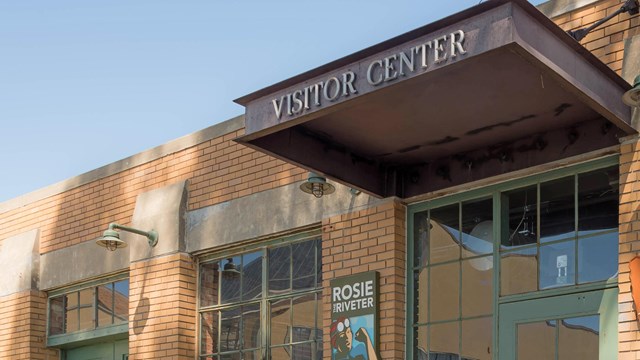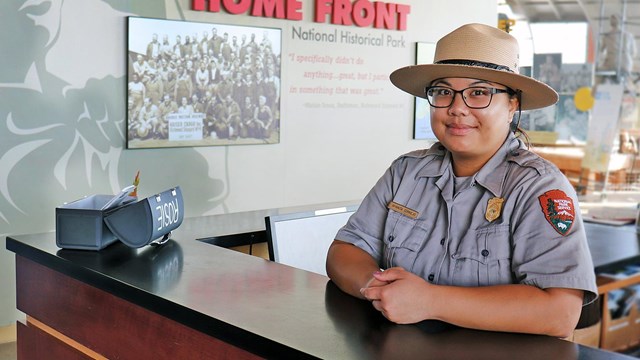
Start Your Visit Here!
Learn more about the history behind the WWII Home Front by arriving first to the Visitor Education Center in Richmond, CA. 
Visitor Center Hours
The Visitor Education Center hours and operations can be found here. 
Directions and Maps
Need directions to the Visitor Education Center or other areas of interest from the Home Front? A Milestone of Inspiring Stories and AchievementsThis year marks a major milestone for Rosie the Riveter/WWII Home Front National Historical Park—we're turning 25! Since the park was officially established by Congress in 2000, we've been dedicated to preserving and sharing the inspiring stories of the WWII Home Front. This year’s theme, “The Rosie Spirit: Continuing to Answer the Call,” honors the resilience and unity of those who shaped our nation during this pivotal time. This October, we’ll celebrate the park’s official anniversary, recognizing a quarter-century of honoring the contributions of those who shaped our nation during a pivotal time in history. Our journey over the past 25 years has been filled with significant achievements. One of the most memorable moments came with the opening of our visitor center in 2012, a welcoming space that has connected thousands of visitors to the park’s compelling stories and exhibits. From the powerful images of women taking on new roles in the workforce to the incredible stories that shaped a nation, the visitor center has become a cornerstone of the park’s mission, showcasing the impact of the Home Front experience through its storytelling and community connection. Celebrating All Year: Special Programs, Events and ActivitiesTo recognize this exciting anniversary, we’re planning a year of engaging programs, special events, and hands-on activities for visitors of all ages. From historical reenactments and guided tours to family-friendly workshops and community events, there will be something for everyone to enjoy. The highlight of the year will be our official anniversary celebration in October, a time to reflect on our shared history and look ahead to the future of Rosie the Riveter/WWII Home Front National Historical Park. Honoring a Quarter-Century of History with the "Rosie the Riveter Trust"We’re proud to celebrate this milestone in collaboration with the Rosie the Riveter Trust, whose unwavering support and leadership have elevated this anniversary year. As the park’s official nonprofit partner, the Trust has taken on a central role in organizing programs, events, and educational initiatives that bring the stories of the WWII Home Front to life. Their tireless dedication ensures that the legacy of resilience, unity, and innovation continues to inspire generations. Together, we’re creating unforgettable experiences and safeguarding these important histories for the future. More to ComeStay tuned for updates on our 25th-anniversary celebrations and make plans to join us throughout the year. Whether it’s your first visit or your fiftieth, we can’t wait to celebrate this momentous occasion with you! 
NPS photo: Luther Bailey The Creation of the National ParkThe park's establishment represented a significant acknowledgment of Richmond’s role in the war effort and the broader contributions of countless Americans who supported the war from home. Its creation helped preserve a vital part of American history, ensuring future generations could explore the profound cultural, technological, and social changes brought about during World War II. Pre-2000: Advocacy and Foundations
2000: Official Establishment
Early 2000s: Building Partnerships
Ongoing Development: Expanding the Vision
For Your Calendar: Upcoming Events and ProgramsWe will be adding programs and events each month. This year marks a special milestone at Rosie the Riveter/World War II Home Front National Historical Park. Join us for commemorations, programs and tours, workshops, and family-friendly activities that honor the people and stories that shaped our nation. Check our calendar each month and join the celebration! |
Last updated: January 31, 2025
